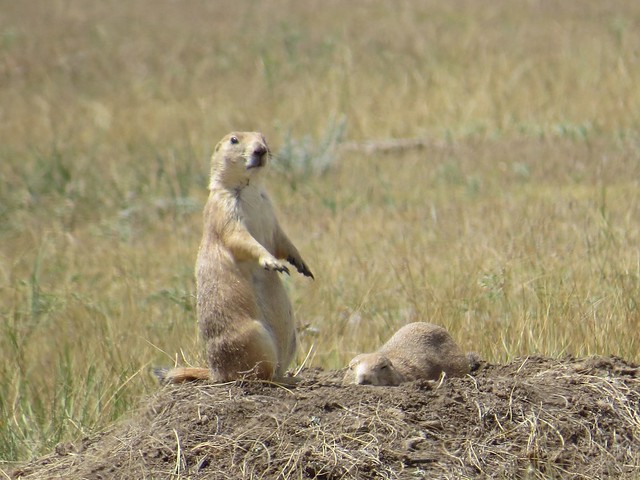
Last month, researchers, wildlife biologists and managers from several federal, state and local agencies gathered at the U.S. Fish and Wildlife Services’ (USFWS) National Black-footed Ferret Conservation Center to celebrate a breakthrough in wildlife management— the development of an oral vaccine bait that helps protect prairie dogs against deadly sylvatic plague and assists in the recovery of endangered black-footed ferrets (BFF). Sylvatic plague, caused by Yersinia pestis, is a bacterial disease transmitted by fleas that afflicts many mammalian species, including humans.
“It takes collaboration to save our endangered wildlife,” said Pete Gober, USFWS’ Black-footed Ferret Recovery Coordinator. “Our partners at the U.S. Geological Survey (USGS), Colorado Parks and Wildlife, the U.S. Department of Agriculture’s Animal and Plant Health Inspection Service (APHIS) and many other agencies have worked tirelessly to bring a simple idea to life— help recover black-footed ferrets in specific locations throughout the West by protecting their primary food source, the prairie dog.”
Black-footed ferrets are one of the most endangered mammals in the United States. They feed almost exclusively on prairie dogs. When plague sweeps through a prairie dog colony, reintroduction and recovery efforts can be severely impacted because black-footed ferrets depend on the colonies for their survival.
“As part of the Black-footed Ferret Recovery Implementation Team, APHIS’ Wildlife Services (WS) program is helping to manage disease and damage in prairie dog colonies near ferret recovery sites,” said WS Western Region Assistant Director Mike Yeary. “This includes dusting thousands of acres of prairie dog burrows with pesticide to kill fleas that carry plague. This new vaccine holds promise as a more cost-effective way to reduce the impacts of plague in certain areas.”
The process of vaccine development, field testing, registration, and large-scale manufacturing and distribution was fraught with many challenges, but the partners persevered. In 2010, USGS scientists at the National Wildlife Health Center completed development of the oral vaccine to combat sylvatic plague in prairie dogs. Shortly thereafter, the vaccine underwent extensive field testing to demonstrate its effectiveness. The field trials involved five federal and nine state wildlife management agencies, and two private organizations.
In 2016, Colorado Parks and Wildlife pioneered an affordable technique for mass-producing the baits and the USFWS, World Wildlife Fund and Model Avionics developed cost-effective delivery methods, including the use of drones and ATVs. Additionally, WS’ National Wildlife Research Center manufactured 300,000 baits with the help of multiple partners. The baits were then applied to over 5,000 acres of black-footed ferret recovery habitat in five western states.
In 2017, the effort expanded as USGS licensed the production of the bait’s vaccine component to a private company, Colorado Serum Company, which is now working with WS to manufacture more than 1 million baits for distribution on more than 20,000 acres of black-footed ferret recovery habitat this fall.
“The partnership between state and federal agencies and private entities has been critical to the success of this project,” continues Gober. “The conservation and economic benefits of the project will be realized for years to come as vaccine use grows, black-footed ferrets repopulate areas of the western United States, and species recovery goals are achieved.”
To learn more, please visit the following:
- Wildlife Partners Unite to Protect Iconic Species from Deadly Plague (USFWS release)
- Black-footed Ferret Recovery Implementation Team
- Sylvatic Plague Vaccine and Management of Prairie Dogs (USGS factsheet)
- Flickr photo collection – Partner Appreciation Day: Plague Vaccine for Prairie Dogs and Ferret Recovery

